 The BTR-3 is an eight-wheeled armored personnel carrier developed in 2000-2001 by Kharkiv Morozov Machine Building Design Bureau and the State Scientific Technical Centre of Artillery & Rifle Arms of Ukraine as well as Adcom Systems of Abu-Dhabi, UAE. The hull and most of the design seems based on the Soviet BTR-80, but it is a brand new new production vehicle derived from the BTR-94 and not an upgrade, with significant differences in the hull and a new combat turret. It was exported far more than used by Ukrainian forces themselves, for a total as of today of c840 vehicles.
The BTR-3 is an eight-wheeled armored personnel carrier developed in 2000-2001 by Kharkiv Morozov Machine Building Design Bureau and the State Scientific Technical Centre of Artillery & Rifle Arms of Ukraine as well as Adcom Systems of Abu-Dhabi, UAE. The hull and most of the design seems based on the Soviet BTR-80, but it is a brand new new production vehicle derived from the BTR-94 and not an upgrade, with significant differences in the hull and a new combat turret. It was exported far more than used by Ukrainian forces themselves, for a total as of today of c840 vehicles.
Development

Initial BTR-3U
Probably the best known armoured vehicle developed by Ukraine after its independence, the BTR-3 only superficially looks like a beffed-up BTR-80. Ukraine indeed had been using and manufacturing the BTR-80, last of the class wheeled Soviet legacy APCs for decades. In the war of Ukraine, no less than 123 BTR-80 and 2 BTR-80M were visually confirmed lost. The vehicle is also close, but not identical to the BTR-94K, a derivative of the BTR-94. The latter could be seen as a derivative of the BTR-80 in 1999 and a parallel development of the BTR-3.
The BTR-3U (most produced for the BTR-3 family) was originally a new armored personnel carrier developed in 2000 by Ukrainian and UAE companies as a private venture. The research for shared R&D costs were important in order to make this project succeed. The goal was to replace vintage BTR-60/70 and early BTR-80 with a new and much improved Ukrainian vehicle. If the basis hull was indeed one of a BTR-80 it was modified in such a way as to be much roomier. The final vehicle also integrated a lot of Western components, notably the powerpack.

The State Scientific Technical Centre of Artillery & Rifle Arms started working ona new turret which appeared spoon too heavy to be carried by a modified BTR-80 in order to give Ukraine in 1999 at least the equivalent of the BTR-82/82A or better. Engineers looked at providing the vehicle with a modified version of the Shkval turret which had a better firepower overall. For this, a brand new, beefier vehicle was needed. However this program was low priority. However it bounced back due to export prospects: The real program development started in 2000 with the first BTR-3U "Guardian" designed according to technical specifications of the UAE company ADCOM.
Initially the company wanted to participate in a competition to supply APCs for the United Arab Emirate (UAE) Marine Corps, which was to be highly mobiled, amphibious and heavily armed. Initially, ADCOM worked on the BTR-94 already in service. It was an Ukrainian modernization of the BTR-80 developed initially after a Jordanian order at the Kharkiv Plant of Transport Engineering V. A. Malyshev (KhZTM) and by the Design Bureau 65. The BTR-94 was completely redesigned and ended as a new development called the BTR-3, which basic design was completed in 2002.
In addition to KMDB, the State Scientific and Technical Center of Artillery and Small Arms (Ukraine) reissued its projected turret, which was accepted by ADCOM Manufacturing Company Ltd. WLL in UAE. The assembler, KMBD looked at Deutz AG (Germany) for the powerpack and soon obtained an agreement, and Allison from the US for the transmission as well as Michelin from France for the tires. They were also integrated into the development and creation of the BTR-3 and its modifications later, as well as ten companies under Ukroboronprom were associated in production, cusomization and delivery. On August 16, 2004, the prototype design was patented.
According to some sources, hull production was located in Mariupol, Donetsk region, Azovmash plant, albeit one source mentioned the Lozovsky Forge and Mechanical Plant. Whatever the case, with the 2022 of Ukraine and combats, then fall of Mariupol, production could not be maintained, and indeed it was preventively transferred at the Kiev Armored Plant close to the final assembly hall. Operating costs of the final BTR-3E are marketed as lower than those of the BTR-4 and by June 2014, estimated to 5,000 hryvnia per month.
From early 2015, the military-industrial complex of Ukraine mastered 90% prpduction of components and accessories. The director of the Kyiv Armored Plant V. Lisitsa reported in an interview after ist first year of combat after from November 2015, that 740 changes had been made to the base design, eliminating all early shortcomings improving combat effectiveness and accelerate production path. The location of welded seams notably was changed. Additional work started on a prototype powered with a much more powerful MAN engine. By early November 2015, at the Defense & Security-2015 arms exhibition, a framework agreement was signed for the production of the improved BTR-3E1 and spare parts for Thailand. So far it's Myanmar which passed the largest order, with 1,000 baseline BTR-3U. With 11 customers and nine variants the production is far from over.
Design

Hull layout and protection
If the new vehicles shared many similarities with the BTR-80 armored personnel carrier, the BTR-3 has much greater internal volume thanks to an addition of 15 cm under the roof all the way to the tail. Basic shapes are about the same as the BR-80/94 however with the typical "duck nose" well tailored for amphibious operations. The rear compartment also houses a far more powerful and fuel efficient engine, and many other improvements. The extra space gained into the hull, about 15 cm taller, also procures more buoyancy reserve due to the heavier turret which is proposed, including one with the Belgian Cockerill gun.The basic layout resembled that of classic APCs, with the control cabin forward of the hull, the combat/troops compartment in the middle, and the engine and transmission compartment at the rear of the vehicle. The driver and co-driver/commander are seated in the cab forward, a gunner in an axial position behind controlling the main weapon system, and a rear compartment with three seats of either side plus firing ports. The troops dismounts or access the vehicle via a new type of safer double-leaf side hatches since the rear of the vehicle is occupied by the powerpack. There are also hatches on the roof.

3D model, top view
The overall protection is comparable to the BTR-94 with an angular hull which artifially increases the armour thickness. The RHA steel hull nose is thicker and better protect the vehicle against heavy machine gun and autoannnon fire froward, whereas the vehicle is protected at all angles against small arms fire and artillery shell splinters. It is fitted by default with NBC protection with air conditioning system and automatic Halon fire suppression systems in the combat compartment and engine bay. The vehicle is heavier , longer, taller and bulkier than its prdecessors with 16.4 t in overall weight, a length of 7.65 m, width of 2.9 m and height 2.86 m, gun laying down.
Powerpack and performances

The BTR-3U is powered by the Deutz BF6M1015 diesel rated for 326 horsepower, licence-built in Ukraine on a 8x8 power steering on the four forward wheels. The BTR-3 is also fitted with a central tyre pressure system used for adjusting tyre pressure to suit terrain conditions and it is also fully amphibious, with a trim vane forward that can be erected to deflect waves, and is propelled by a single waterjet engine, drove by the engine whereas bilge pumps are activated. The diesel is coupled with an Allison MD3066 automatic transmission.
An UTD-20 engine rated for 300 hp, closer to the BTR-80/94 is also proposed in option. From 2015 an Ukrainian transmission was worked on. The vehicle moves on a set of eight bulletproof French Michelin tires, diagonal, tubeless, with variable pressure, sized 365/90 R18 or 335/80 R20. The final vehicle is capable of a range of 600 km and 80-85 kph on a road, c8 kph when swimming. It was tested able to climb a gradient of 60%, a side slope of 40%, a vertical step of 0.5 m and a trench of 2 m.
Armament

The BTR-3U Guardian is equipped with the KBA-105 Shkval combat module as a baseline. It's composed of a remotelly operated 30-mm ZTM-1 autocannon and a coaxial 7.62-mm KT-7.62 machine gun, and completed by two 9M113M Konkurs-M ATGM launchers and a 30-mm automatic grenade launcher for good measures in oder to adress any threat that could be faced: Infantry, soft-skinned vehicles, moderately armoured vehicles, and heavy armour. The fire control system comprises the OTP-20 sighting system integrated with the guided missile fire control system and two-plane SVU-500 weapons stabilizer for the autocannon.
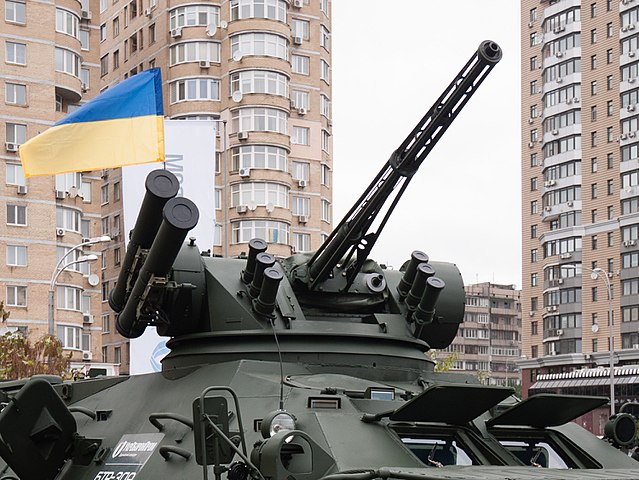
Shturm Fighting Module
The BTR-3EI as a variant could be equipped with the manned (single-seat) BM-3M Shturm turret module an 2-plan stabilization developed by Morozov Kharkiv Machine Building Design Bureau under Borisyuk. The module sports th same 30 mm ZTM-1 automatic cannon with 350 rounds of ammunition, coaxial 7.62 mm KT-7.62 machine gun (with 2,000 rounds) but the Barrier anti-tank missile system with four launchers. Still, there os a 30 mm KBA-117 automatic grenade launcher on its left side, making the turret even heavier and bulkier.

In that case, the fire control system comprises the OTP-20 optical-electronic sighting system for the Barrier ATGM fire control system and SVU-500 weapon stabilizer enabling firing on the move. The two banks of three 81 mm Tucha smoke grenade launchers on both sides, are activated by an electric trigger. There is a main observation, aiming and fire control system sight "Trek-M" from Chernigov Radio Equipment Plant to rapidly swap and deal with ground targets and helicopters, as well as weapon remote control. The commander has a separate panoramic observation sight with target search and target designation called "Panorama-2P", as well as a control panel duplicating weapons station's control through the gunner's own sights to take over. The telecopic panoramic camera could be raised 0.5 m above the turret, provide a 360-degree view. It is used by the commander to designate targets for the gunner in a hunter-killer mode. This panoramic observation camera is produced at the same plant.
BTR-3U specs | |
| Dimensions | 7.65 x 2.9 x 2.8 m (incl. turret) |
| Total weight | 16.4 tonnes |
| Crew | 3 crew (+6 passengers) |
| Propulsion | Deutz AG TD 326 hp, Allison Transmission |
| Suspension | Wheeled 8×8 |
| Speed (road) | 85 km/h |
| Range | 600 km |
| Armament | BM-3 Shturm/KBA-105 Shkval 30 mm autocannon, 7.62 mm LMG |
| Armor | Welded steel, 10-25mm RHA |
| Production | c840 as of 2025 |
Variants

BTR-3E-90, the Cockerill CMI CSE90LP gun armed support version
BTR-3U "Hunter": initially known as BTR-94K.
BTR-3U "Guardian": UAE Marines initial version with "Buran-N1" turret.
BTR-3E: New UTD-20 engine.
BTR-3E1: BM-3 "Shturm" turret, new MTU 6R106TD21 diesel.
BTR-3E ARV: Recovery vehicle with winch, crane and dozer blade.
BTR-3E 90: Heavy fire support vehicle, 90mm Cockerill main gun.
BTR-3DA: Upgraded version (Ukrainian 2017) with the BM-3M Shturm-M weapon station
BTR-3KSH: Command and control variant.
Operators

Thai BTR-3E
 Azerbaijan: six BTR-3 armed with HMGs
Azerbaijan: six BTR-3 armed with HMGs Chad: 12 BTR-3Es
Chad: 12 BTR-3Es Ecuador: Three BTR-3Us ordered (unknown if delivered)
Ecuador: Three BTR-3Us ordered (unknown if delivered) Kazakhstan: Two BTR-3Es.
Kazakhstan: Two BTR-3Es. Myanmar: 500+ BTR-3Us in service. +10 3Us from Ukraine in 2001. US$500 million contract in 2004: 1000 BTR-3U as kits for local assembly. Last batch 368 BTR-3Us delivered January 2013.
Myanmar: 500+ BTR-3Us in service. +10 3Us from Ukraine in 2001. US$500 million contract in 2004: 1000 BTR-3U as kits for local assembly. Last batch 368 BTR-3Us delivered January 2013. Nigeria: 30 BTR-3UNs, 6 BTR-3UKs, 4 BTR-3UR 7 BTR-3E with 14.5mm HMGs.
Nigeria: 30 BTR-3UNs, 6 BTR-3UKs, 4 BTR-3UR 7 BTR-3E with 14.5mm HMGs. Saudi Arabia: Tested by General Directorate of Civil Defense.
Saudi Arabia: Tested by General Directorate of Civil Defense. Russia: 12 captured since 2022.
Russia: 12 captured since 2022. Sudan: 4 confirmed lost in the 2023 Sudan conflict.
Sudan: 4 confirmed lost in the 2023 Sudan conflict. Thailand: 96 BTR-3E1s +120 from Ukraine*.
Thailand: 96 BTR-3E1s +120 from Ukraine*. United Arab Emirates: 90 Guardians, amog the first ordered and exported.
United Arab Emirates: 90 Guardians, amog the first ordered and exported. Ukraine: 22 BTR-3Es ordered for the armed forces and National Guard, 5 by June 2014, 50 BTR-3DAs by December 2017. 46 lost in the present war as of January 2025.
Ukraine: 22 BTR-3Es ordered for the armed forces and National Guard, 5 by June 2014, 50 BTR-3DAs by December 2017. 46 lost in the present war as of January 2025.
The Thailand case: The 1st two were delivered by air on 17 September 2010, 2nd batch of 121 ordered by the Royal Thai Army plus 14 for the Royal Thai Navy for the Royal Thai Marine Corps, in August 2010 (MTU Engine, Edison Gear). The This want them in their new Mobile Infantry regiment (288 BTR-3E1s) with the first 96 in 7 different variants (64 APCs, 4 command vehicles, 3 armoured ambulances, 9 81 mm mortar carriers, 4 120 mm mortar carriers, 6 ATGM BTR-3E1s , 6 armoured recovery vehicles). 5 more BTR-3E1s were given for free including as part of a maintenance contract of 9 BTR-3E1. The first 12 Marines vehicles arrived on 24 June 2011 to replace V-150 armoured cars, assigned to the southern provinces. 15 BTR-3E1s, 6 BTR-3RKs were ordered for the Royal Thai Army in August 2013.
Gallery
Illustrations
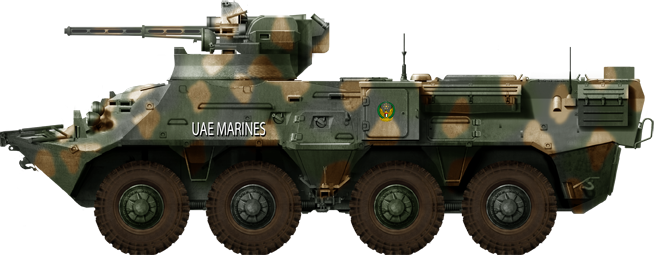
UAE Marines BTR-3U Guardian
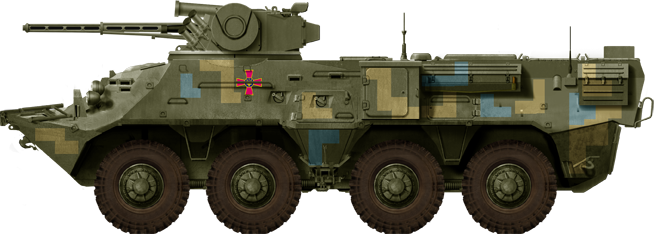
BTR-3E in standard digital camo
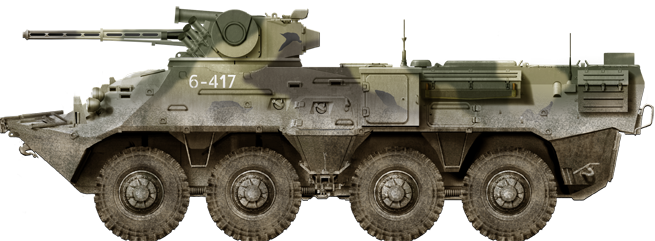
BTR-3A in combat in Ukraine with the classic wavy camo, 2023.
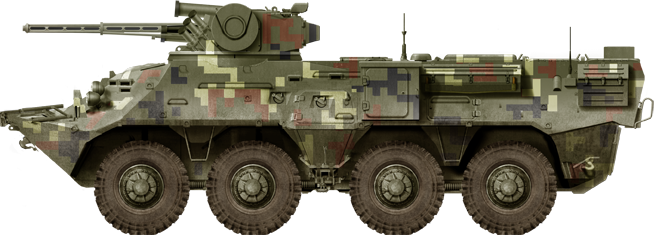
Thai BTR-3A
Next: BTR-3DA, BTR-3-90, BTR-3KsH.
photos
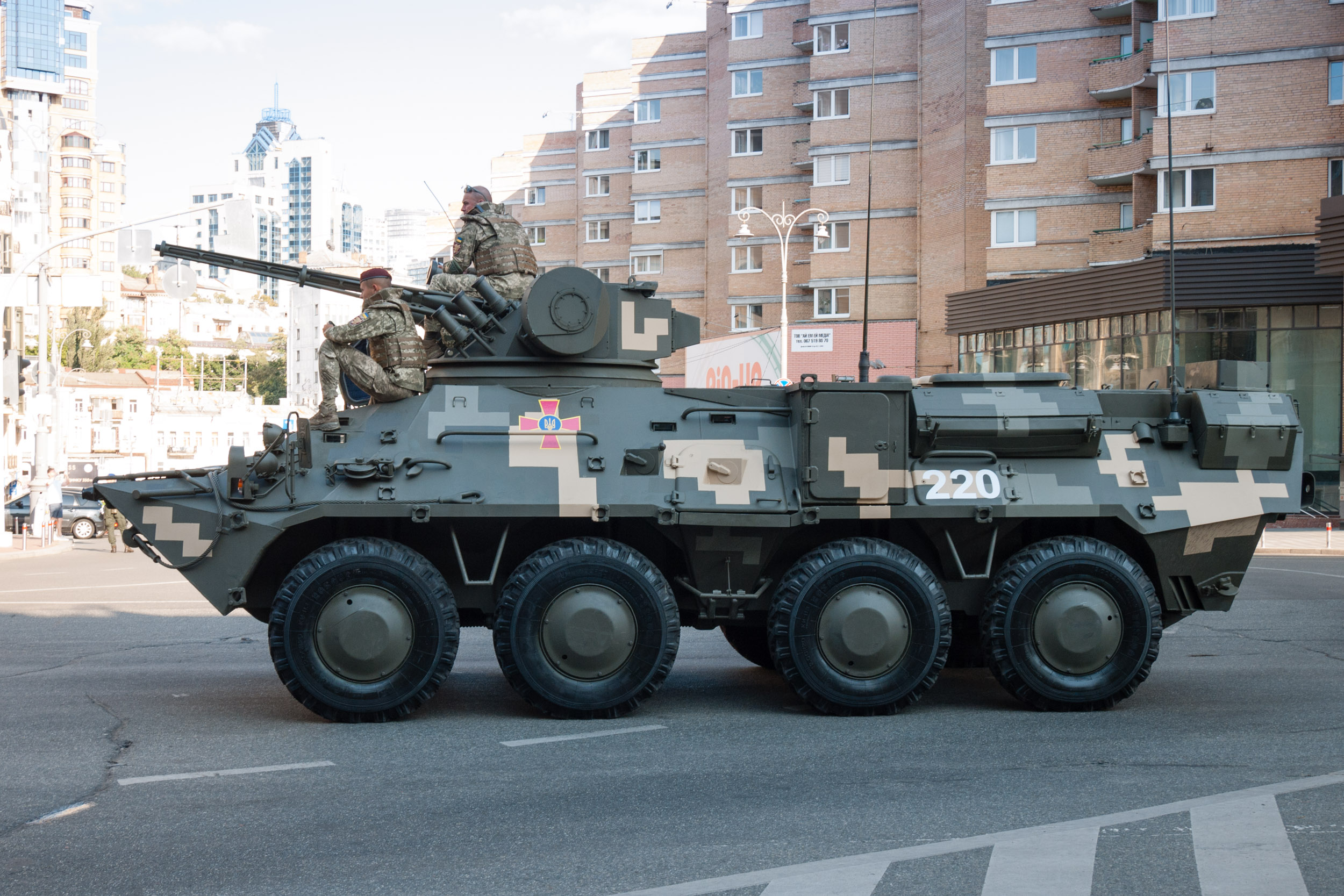
BTR-3 APC Kiev 2021
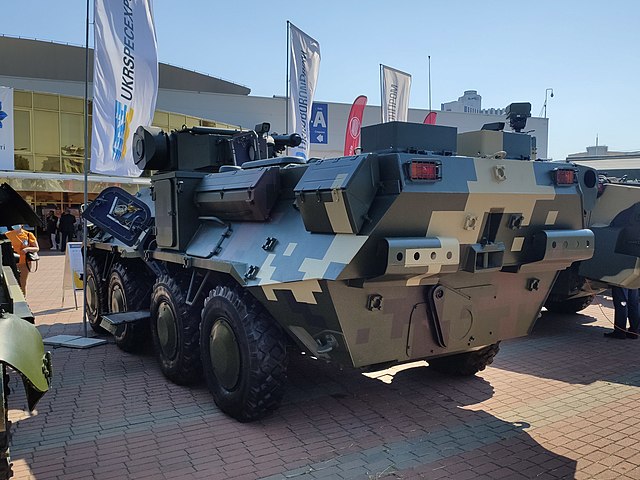
BTR-3 APC Kiev 2021
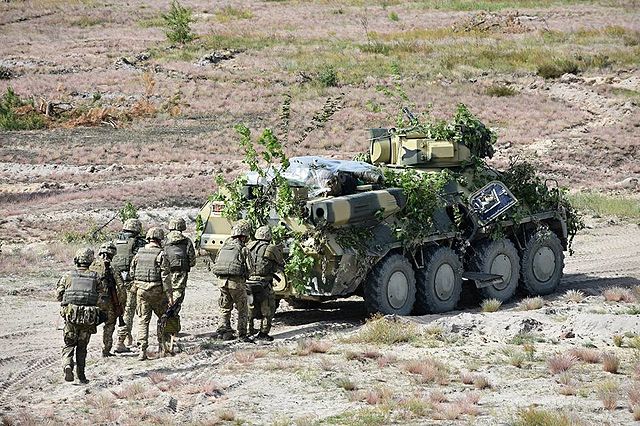
BTR-3 Air Assault Brigade Training 2017
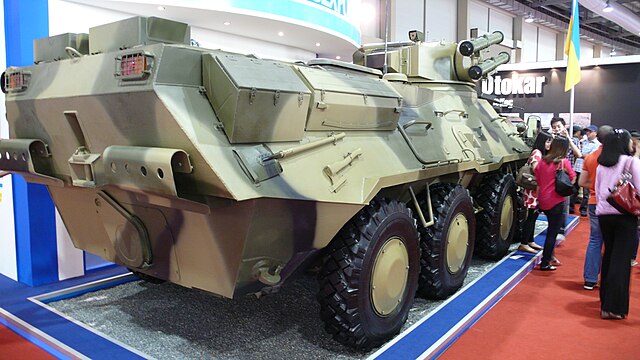
BTR-3E at BRIDEX 2011
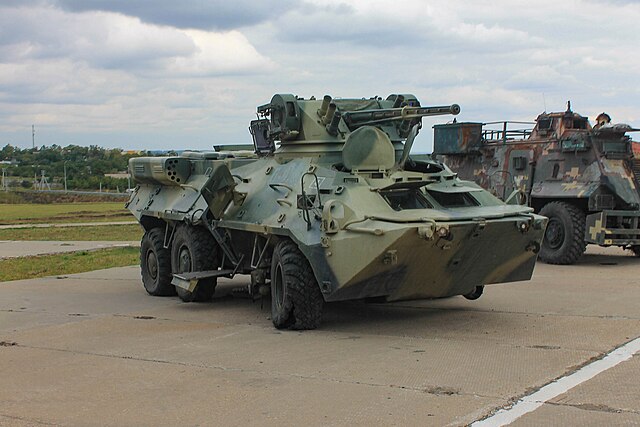
BTR-3E Rostov
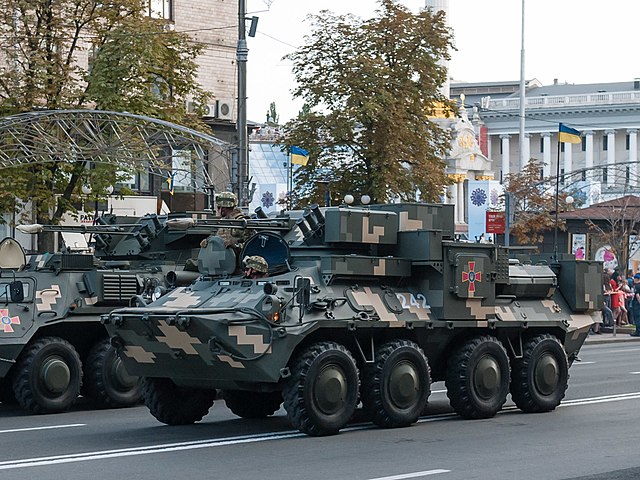
BTR-3KSh Kiev 2021
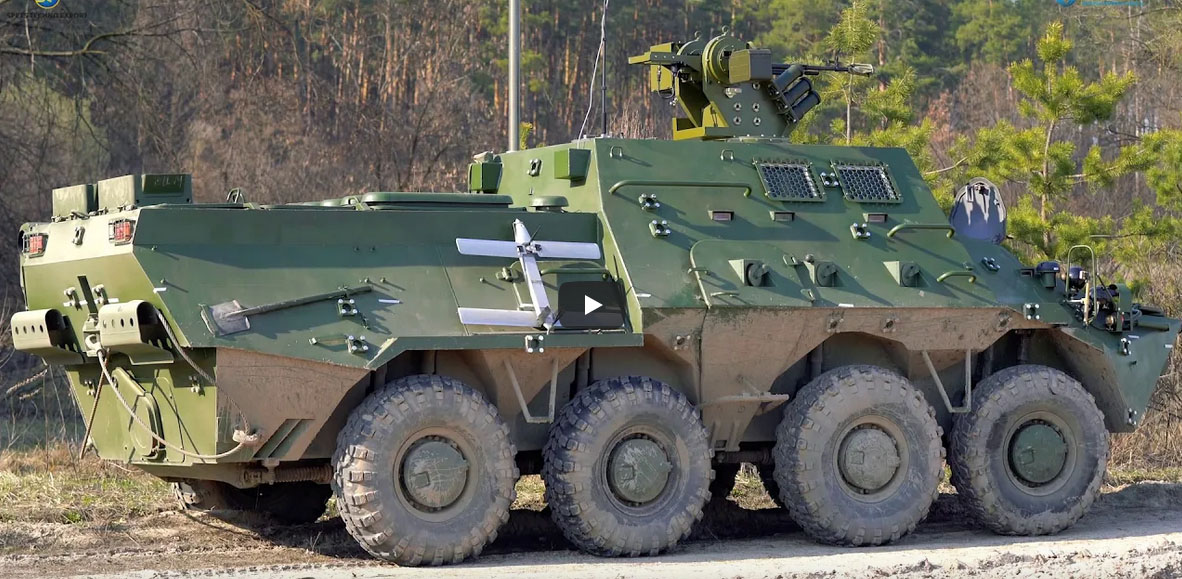
BTR-3K Command Variant
BTR-3E Prototype 2016
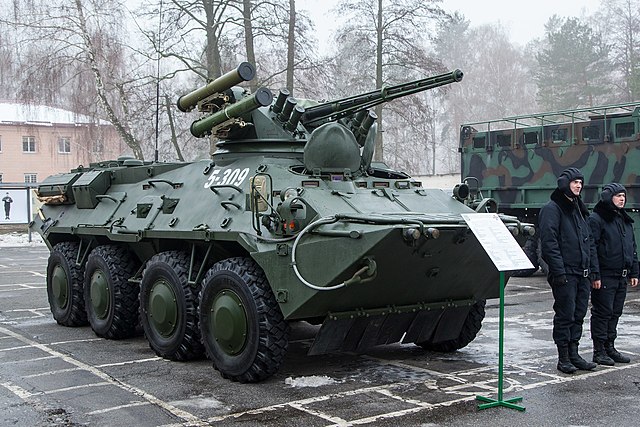
BTR-3E 2016
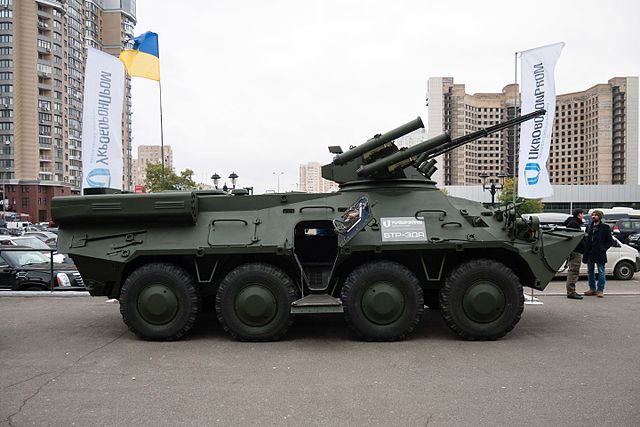
BTR-3DA
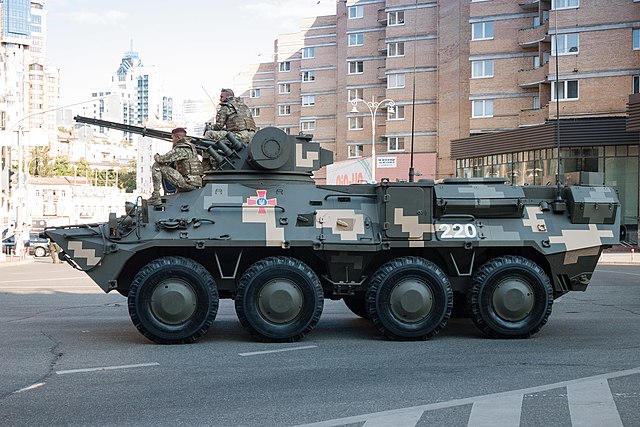
BTR-3 Kyev 2021
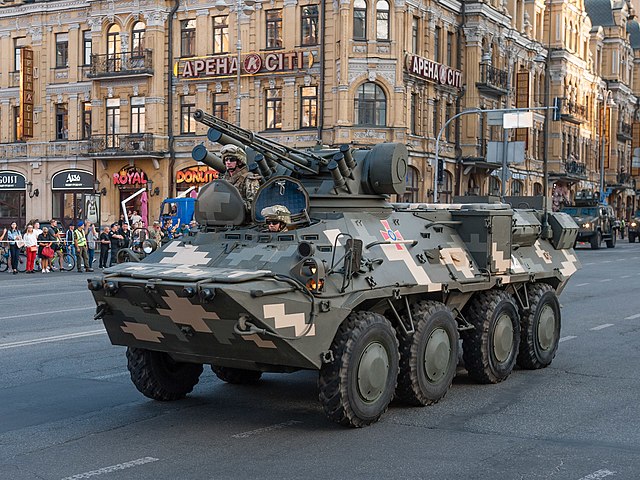
BTR-3 Kyev 2021
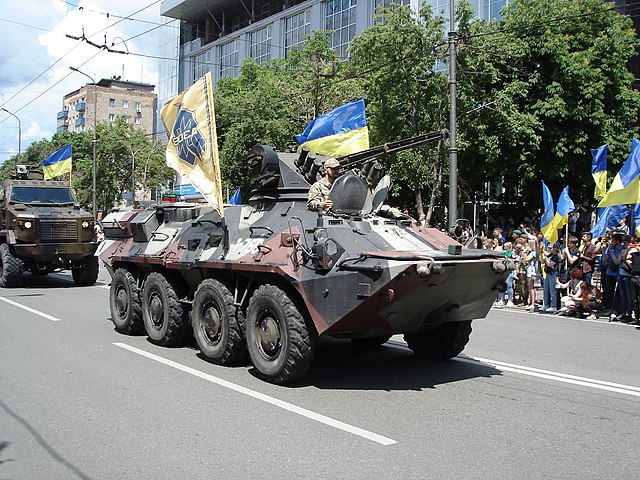
BTR-3E Azov Bat.
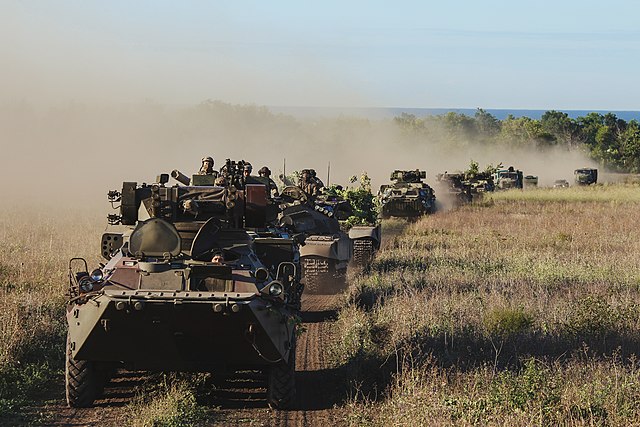
BTR-3s in column manoeuver summer 2020
Video
Freshly arrived BTR-3E of the National Guard of Ukraine
More photos
All below: Pinterest.
BTR-3 w. SHKVAL module (Baryer 2x ATGM and ZTM-2 30mm Auto Cannon)

Ukrarmor exhibited BTR-3E in desert outfit

Ukrainian BTR-3E src militaryparitet.com

BTR-3E abandoned in good condition and used by rebels in Donbas, April 2022

Ukrainian BTR-3Es

BTR-3E with addon BAR armour in combat, 2023

BTR-3 DA mod.2015

BTR-3 Mortar Carrier 120mm M2 variant

BTR-3E at speed.

BTR-3 of the param. Bat. "Azov"

Destroyed BTR-3E, May 2022

Unknown vehicle

BTR-3 in combat

Ukrainian BTR-3E at full speed

Thai BTR-3E

Thai BTR-3E prepared for Thailand

Myanmar BTR-3Es

Al turret variant



Variant with updated turret

Thai BTR-3E

Thai BTR-3E

Thai BTR-3E and crew
Sources/Links
btvt.infoarmy-technology.com
morozov.com.ua
en.wikipedia.org/wiki/BTR-3
On ru.wikipedia.org/wiki
military-today.com
commons.wikimedia.org
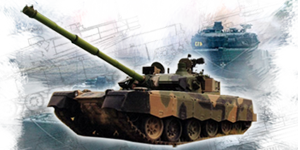
Modern Tanks
Modern MBTs posters

Denel Bagder (2018)

Type 16 MCV (2016)

Gepard 1A2 last rounds 2011

SANDF

Russian AFVs

Main Battle Tanks
 Armored Personal Carrier (2000): c840 delivered
Armored Personal Carrier (2000): c840 delivered